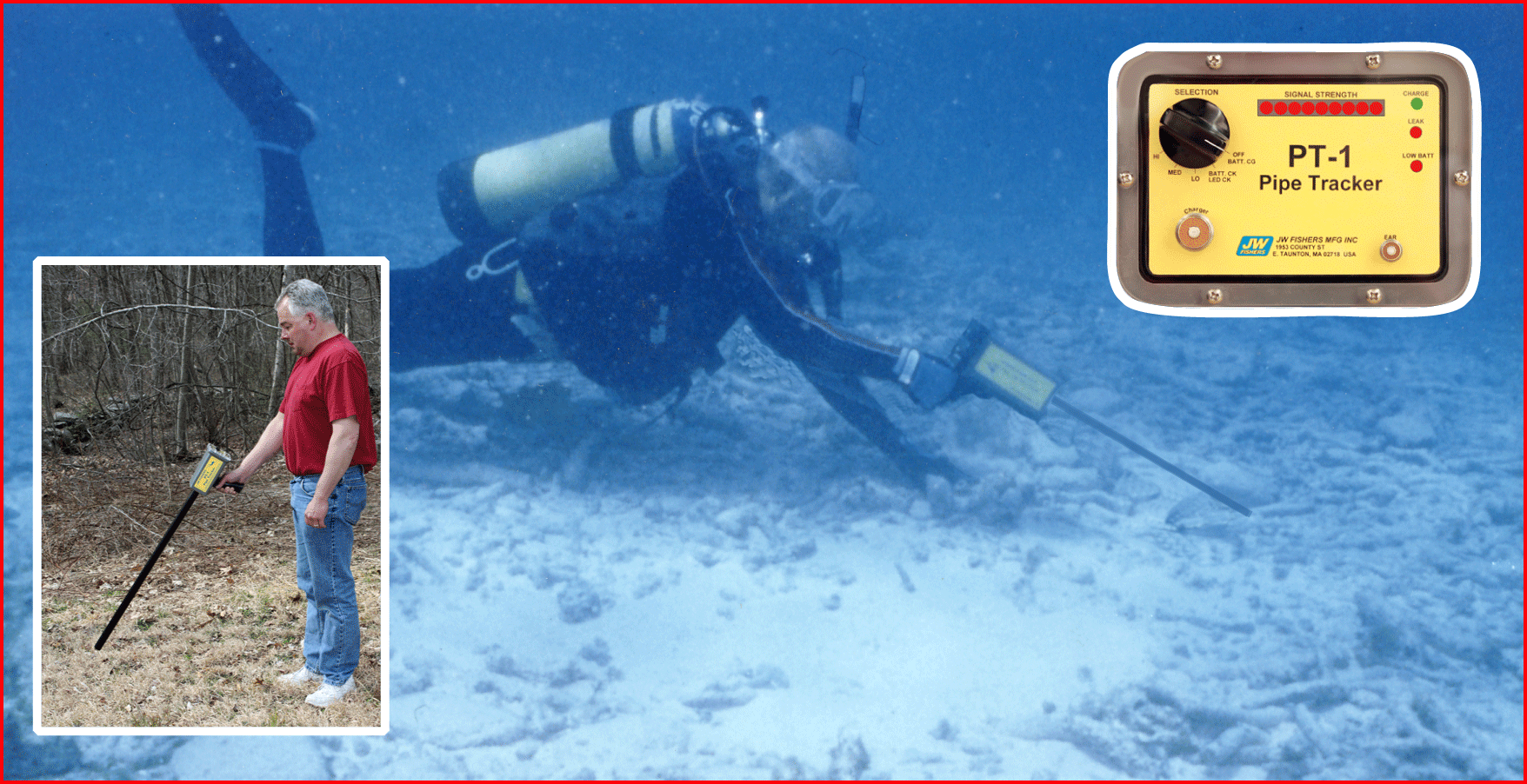
Diver swimming with PT-1 pinpointing magnetometer
Inset photos: (L) Tracking a pipeline on land with the PT-1, (R) The PT-1 faceplate with controls and LED Display.
Oil and utility companies have been laying pipelines and cables under the ocean for more than a century. Before the introduction of GPS, marking their position was a difficult and tedious task, fraught with error. Over time the position and burial depth of a pipeline or cable can be changed due to storms and other environmental forces. Today, there is a pressing need to accurately map the location of these lines to ensure they are not damaged by dredging, dropped anchors, and other potentially hazardous operations. With a large number of these lines decades old, there is also an urgent need to examine their condition and perform a thorough inspection. The problem is, many can not easily be located.
To assist in the effort JW Fishers has developed the PT-1 pipe tracker. This instrument is a very sensitive pinpointing magnetometer. It works equally well on land and underwater. The PT-1 was specially designed to locate and track iron and steel pipelines, but will also detect any ferrous (iron/steel) object that comes within it's detection field. The range of the instrument is not affected by the material between the sensor and the metal target. The range remains the same whether detecting through air, water, silt, sand, stone, or concrete.
The PT-1 uses modified magnetometer technology to provide exceptional sensitivity with effortless pinpointing of targets. The device can easily locate and track pipelines within close proximity of bridges, metal bulkheads, and steel reinforced piers which would be difficult, if not impossible, with other magnetometers. An additional advantage is the pipe tracker's directional capability; the ability to quickly determine in which direction the target is located and pinpoint it's exact position.
Fishers pipe tracker consists of a 3 foot long probe with electronics box mounted on one end. In the tip of the probe is a sensor that measures the earth's magnetic field strength. Iron and steel objects create a distortion in the field which the sensor picks up. Field changes are displayed on the PT-1 control panel with both audio and visual outputs. The larger the object, the stronger the reading. The visual indicator is an LED light bar which illuminates more lamps for stronger signals. The audio output is heard through a waterproof earphone and increases in frequency as the target gets closer. The pipe tracker's rechargeable battery pack powers the system for 15 continuous hours.
Other groups that will find this device invaluable include police departments and military dive teams for locating weapons, mines, and other explosive devices. Commercial diving companies can use it to track armored power and communications cables, find anchors and chains, locate lost dredge heads, and recover tools. Professional treasure hunters will be impressed with it's ability to pinpoint the ferrous metal objects marking a shipwreck site such as cannon, cannon balls, and old iron anchors.
The PT-1 comes complete and ready to operate. Included accessories are AC and DC battery chargers, and an underwater earphone. The instrument is depth rated to 200 feet and is covered by Fishers unconditional two year warranty.
